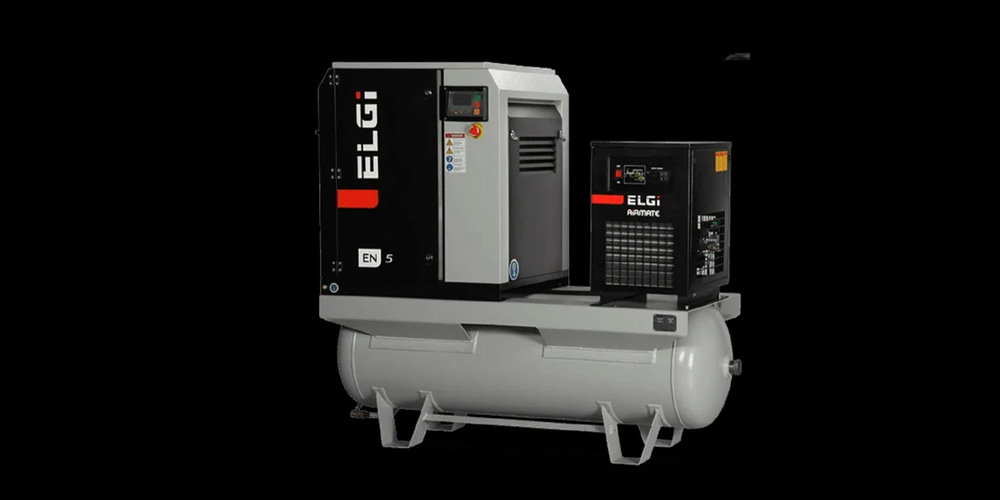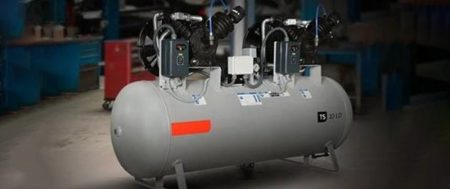Screw Compressors
Screw compressors belong to the family of positive displacement compressors, and they utilize two helical screws to compress air. These screws are closely intertwined and rotate in opposite directions. This motion draws in air through the inlet and compresses it as they turn. Subsequently, the compressed air is released at the outlet.
Loading a Screw Compressor
Loading a screw compressor refers to the operation where the compressor is actively running and producing compressed air. This occurs when there is a need for compressed air within the system. The compressor’s operation is regulated by a pressure switch, which monitors the pressure in the system and activates or deactivates the compressor as required.
How Does Loading a Screw Compressor Work?
When the pressure switch detects that the system’s pressure falls below a specific threshold, it sends a signal to start the compressor. The compressor then opens its inlet valve, allowing air to enter, get compressed, and be discharged through the outlet. As the compressor runs, the system’s pressure increases and the pressure switch eventually stops the compressor when the desired pressure level is reached.
In simpler terms, loading a screw compressor operates by letting air flow into the compressor, compressing it, and then releasing the compressed air.
When Is Loading a Screw Compressor Used?
Loading a screw compressor is employed whenever there is a demand for compressed air within the system. This demand could arise from various applications, such as powering pneumatic tools, running air conditioners, or operating manufacturing machines.
Unloading a Screw Compressor
Unloading a screw compressor signifies that the compressor is inactive and not producing compressed air. This is done when there is no requirement for compressed air in the system. Unloading the compressor serves to conserve energy and minimize wear and tear on the equipment.
How Does Unloading a Screw Compressor Work?
When the pressure switch detects that the system’s pressure has exceeded a specified limit, it sends a signal to stop the compressor. The compressor then goes into an unloaded state, ceasing to compress air and venting any previously compressed air within the compressor. As the compressor unloads, the system’s pressure decreases, and the pressure switch eventually reactivates the compressor when the desired pressure level is reached.
In simpler terms, unloading a screw compressor involves closing the inlet valve to stop the flow of air into the compressor, causing it to halt operation.
When Is Unloading a Screw Compressor Used?
Unloading a screw compressor is employed when there is no demand for compressed air in the system. This situation typically occurs during periods of low air usage, such as at night or on weekends. Unloading the compressor during these times conserves energy and safeguards the compressor from unnecessary wear and tear.
Benefits of Loading and Unloading Screw Compressors
Loading and unloading screw compressors offer several advantages, including:
Improved Energy Efficiency: Running the compressor only when necessary reduces energy consumption.
Extended Compressor Life: Fewer start/stop cycles can prolong the compressor’s lifespan.
Reduced Maintenance Costs: Operating the compressor under less stressful conditions can lower maintenance expenses.
Conclusion
Loading and unloading screw compressors represent a strategy to enhance their efficiency and durability. Purchase Compressor for loading with Al wajba by operating the compressor only when needed, energy consumption can be minimized, the compressor’s lifespan extended, and maintenance costs reduced.
FAQ
Q. What is the difference between a compressor operating at full load and one that is loading and unloading?
A: The main difference lies in how these compressors respond to changes in air or gas demand:
Compressor Regular Operations (Full Load): This type of compressor runs continuously at its maximum capacity, delivering compressed air or gas to the system regardless of the actual demand. It operates at a constant speed and pressure, which can be energy-inefficient during periods of low demand.
Loading and Unloading Compressor: This compressor is designed to adjust its capacity to match changing demand. It loads (runs at full capacity) during high demand and unloads (reduces capacity) during low demand. This modulation saves energy and maintains system stability.

